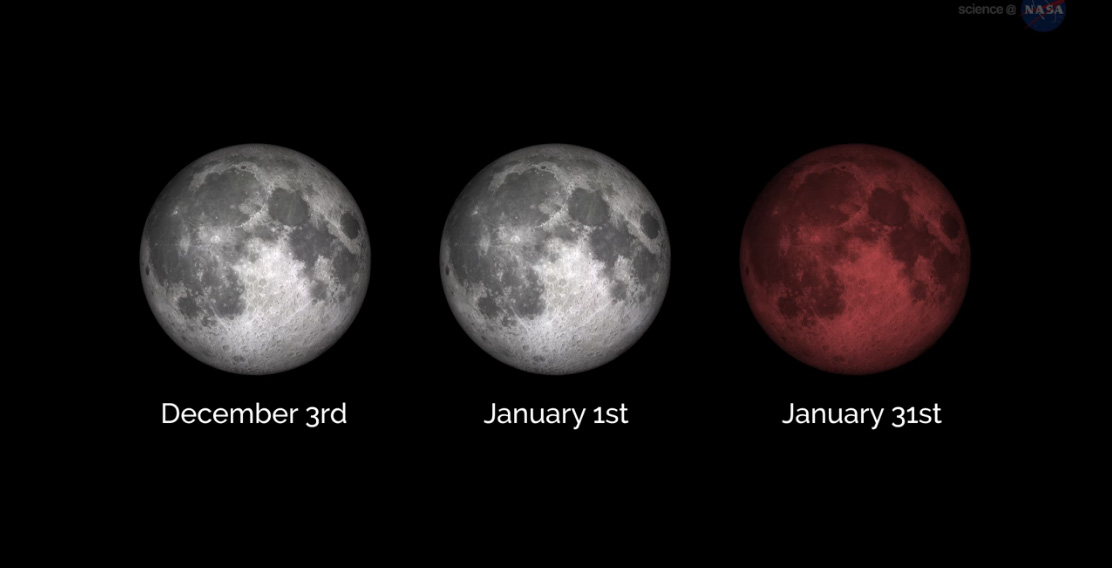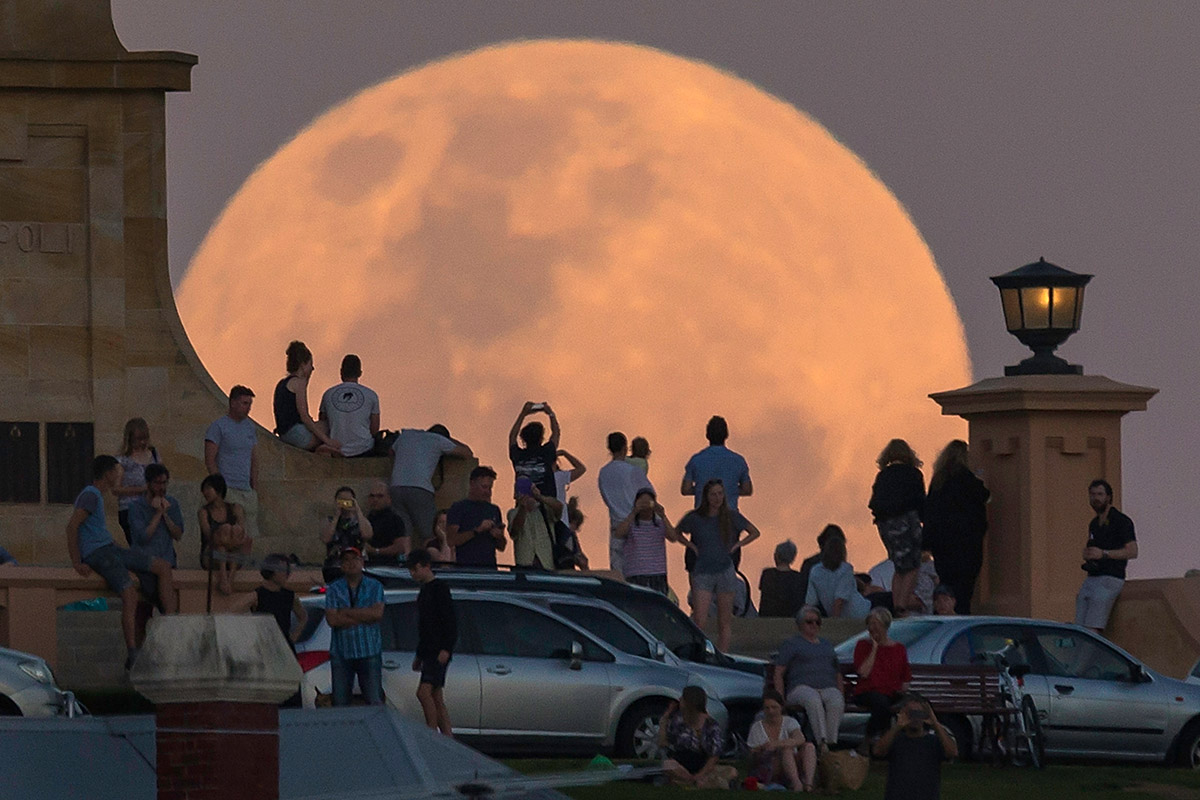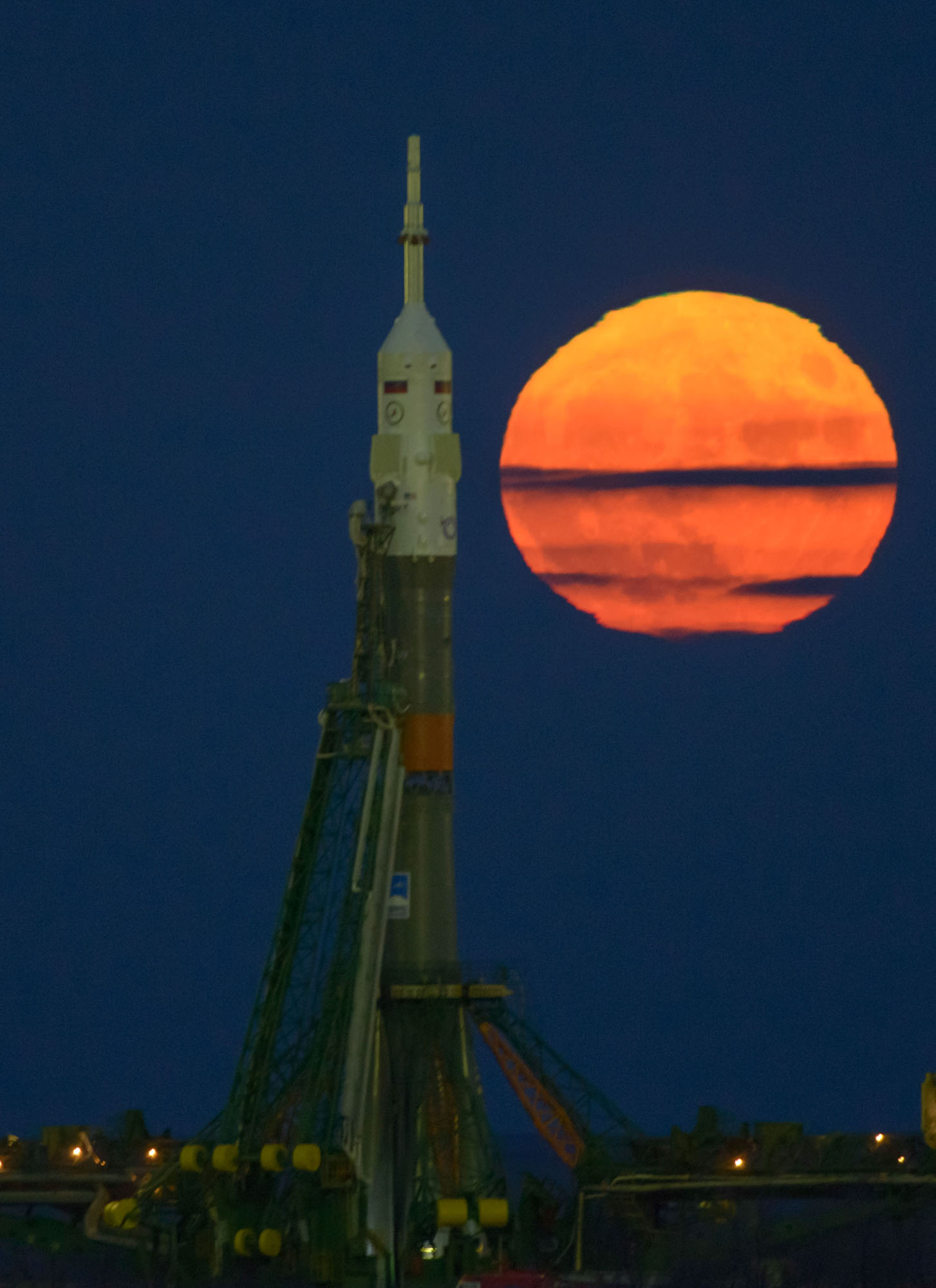Full Moon Sunday Kicks Off 'Supermoon Trilogy,' Including a Lunar Eclipse
Sunday night's Full Cold Moon – a bigger and brighter full moon than usual – will kick off a very special "supermoon trilogy," NASA says.
The Dec. 3 full moon is the first of three consecutive supermoons, including a lunar eclipse. The other supermoons will happen on Jan. 1 and Jan. 31, 2018. You can watch Sunday's supermoon live online here, courtesy of the online astronomy service Slooh or directly from Slooh.com here.
If you only have time to catch one of them, be sure to check out the "extra-special" Jan. 31 supermoon, NASA said in a statement Friday (Dec. 1). The late January supermoon will take place during a total lunar eclipse visible from western North America, the Pacific and Eastern Asia. It will also be a blue moon, too. [Supermoon 2017 Guide: When and How to See It]
A supermoon occurs when the full moon is at the closest point of its orbit to the Earth, which is also called the perigee. That makes the moon look extra-close and extra bright — up to 14 percent bigger and 30 percent brighter than a full moon at its furthest point from Earth, called the apogee.

Pair that up with a lunar eclipse, and you will have a spectacular view of the moon turning dark as it moves out of the sun's light and into the shadow of the Earth. Only the light reflected off Earth will be visible on its surface, producing a ruddy red-brown color on the moon's surface during totality.
"The lunar eclipse on Jan. 31 will be visible during moonset. Folks in the eastern United States, where the eclipse will be partial, will have to get up in the morning to see it,” said Noah Petro, a research scientist from NASA’s Goddard Space Flight Center, in the same statement. "But it’s another great chance to watch the moon." [Supermoon Secrets: 7 Wild Big Moon Facts]
As if the Jan. 31 moon isn't special enough, that supermoon lunar eclipse will also be a "blue moon." That's a term for the second full moon in a month. Blue moons only happen about every 2.5 years, so it's worth going outside to take a look.
Get the Space.com Newsletter
Breaking space news, the latest updates on rocket launches, skywatching events and more!
Regardless of which supermoon you choose to view, be aware that it's hard for amateur astronomers to distinguish the full moon from a supermoon – the size difference isn't all that great. If the moon is just on the horizon, it may look a lot bigger, but that's an illusion. Scientists call it the "moon illusion" and it may be because your brain compares it to nearby objects, or because your brain believes objects on the horizon are larger than objects in the sky.

You don't need any special equipment to look at the full moon – just your eyes, and if you live in colder climates, some warm clothing. The moon will be visible even in areas with light pollution. To look at the moon in more detail, you can use a pair of binoculars or a small telescope.

Editor's note: If you capture a great shot of the supermoon or any other night sky view that you would like to share with Space.com for a possible story or gallery, send images and comments in to: spacephotos@space.com.
Follow us @Spacedotcom, Facebook and Google+. Original article on Space.com.
Join our Space Forums to keep talking space on the latest missions, night sky and more! And if you have a news tip, correction or comment, let us know at: community@space.com.

Elizabeth Howell (she/her), Ph.D., was a staff writer in the spaceflight channel between 2022 and 2024 specializing in Canadian space news. She was contributing writer for Space.com for 10 years from 2012 to 2024. Elizabeth's reporting includes multiple exclusives with the White House, leading world coverage about a lost-and-found space tomato on the International Space Station, witnessing five human spaceflight launches on two continents, flying parabolic, working inside a spacesuit, and participating in a simulated Mars mission. Her latest book, "Why Am I Taller?" (ECW Press, 2022) is co-written with astronaut Dave Williams.









